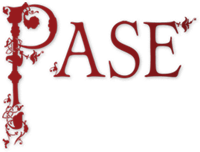Ludi 2
Ludi ‘of Huntington’ (Salop.), fl. 1066
Male
CPL
4 of 5
Name
Summary
Ludi 2 was a small landowner on the borders of Shropshire and Herefordshire, with three manors assessed at 4 hides and worth 30s.Distribution map of property and lordships associated with this name in DB
List of property and lordships associated with this name in DB
Holder 1066
| Shire | Phil. ref. | Vill | DB Spelling | Holder 1066 | Lord 1066 | Tenant-in-Chief 1086 | 1086 Subtenant | Fiscal Value | 1066 Value | 1086 Value | Conf. | Show on Map |
|---|---|---|---|---|---|---|---|---|---|---|---|---|
| Herefordshire | 32,1 | Marston Stannett | Ludi | Ludi 'of Huntington' | - | Rayner the carpenter | - | 0.50 | 0.20 | 0.20 | B | Map |
| Shropshire | 4,11,2 | Huntington | Ludi | Ludi 'of Huntington' | - | Roger, earl | Ralph de Mortimer | 1.50 | 0.50 | 0.50 | B | Map |
| Shropshire | 5,3 | Ashford Carbonel | Ledi | Ludi 'of Huntington' | - | Osbern fitzRichard | - | 2.00 | 0.80 | 0.40 | D | Map |
| Totals | ||||||||||||
Profile
The name Ludi occurs only twice in DB, at estates in south Shropshire and north Herefordshire which were only 10 miles apart. The extreme rarity of the name makes it very probable that they were the same person; the succession of different Normans is explained by the fact that the king gave Earl Roger almost the whole of Shropshire but nothing in Herefordshire.Ludi’s manor of Huntington was adjoined on the west by Ledi’s manor of Ashford Carbonel (and was in Ashford parish). Since Ledi is not otherwise recorded as a personal name in England, it may have been a mistake for Ludi. Although this suggestion requires an unusual copying error (the letters u and e were not confusable), it is preferable to the alternative, that men with the extremely rare names Ludi and Ledi just happened to be neighbours.
If this identification of Ludi 2 is correct, the larger part of his estate was a block around Ashford on the river Teme, a combined holding which was larger than its assessment of 3½ hides might suggest, since in 1086 it included arable for eight ploughs and two water mills. The small outlying part of Ludi’s estate in Herefordshire lay in the Bromyard uplands, at the head of one of the narrow valleys which characterize the district. It was one of four small holdings at Marston Stannett, three of ½ hide and a fourth (a berewick of the great manor of Leominster) of unknown assessment. Holding land at Marston perhaps gave access to resources not available in the riverside manors, though there was no record of them in DB, where in 1086 the three separate manors each had a single plough associated with slaves or a border (no details were given for the berewick). The idea that holdings at Marston were in some sense outliers rests on the fact that the other two ½ hides also belonged to men (wealthier than Ludi) whose core holdings were on better land elsewhere, Edwin and Særic.
